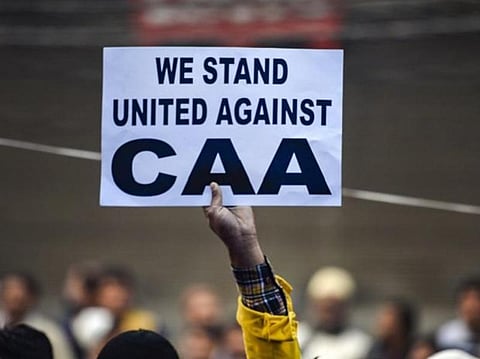
- Home
- Live Blog
- Breaking News
- Top Headlines
- Cities
- NE News
- Sentinel Media
- Sports
- Education
- Jobs

The high-level committee constituted by the Government to suggest measures for the Constitutional, Legislative and Administrative safeguards to the Assamese people under Clause 6 of the Assam Accord last Monday met the Union Home Minister, with media reports saying the committee members discussed some legal angles related to it. Though both the committee and the Government have chosen not to reveal much detail about that meeting, it is common sense that the Union Home Minister had wanted the panel to include certain points so that it could take the wind out of the sail of the ongoing anti-CAA movement in Assam. The All Assam Students’ Union (AASU) has already guessed it, and that exactly is why the leadership of the student body has stated that provisions under Clause 6 of the Assam Accord are not at all related to the Citizenship (Amendment) Act. The AASU’s point is one hundred per cent correct. The Clause 6 is related to the Assam Accord, which had provided for certain very specific actions that are supposed to be taken by the Government – the Union Government in particular. For those like the Union Home Minister who have probably never read the contents of the Assam Accord, Clause 5 of that very important agreement between the Government of India and the All Assam Students’ Union deals exclusively and in detail about the issue of illegal migrants from erstwhile East Pakistan and present-day Bangladesh. Clause 5 in fact has as many as nine sub-clauses starting from Clause 5.1 to Clause 5.9, each giving very specific directions to the Government. Clause 5.1 for instance, says – “For purposes of detection and deletion (of names from electoral rolls) of foreigners, 1.1.1966 shall be the base year and date.” Clause 5.2 says – “All persons who came to Assam prior to 1.1.1966, including those amongst them whose names appeared on the electoral rolls used in 1967 elections, shall be regularised.” Having read Clause 5.2, it is very important to read what Clause 5.3 says – “Foreigners who came to Assam after 1.1.1966 (inclusive) and up to 24th March 1971 shall be detected in accordance with the provisions of the Foreigners Act, 1946 and the Foreigners (Tribunals) Order 1964.” In continuation to the provisions of Clause 5.3, the net Clause (5.4) has certain very important provisions – “Names of foreigners so detected will be deleted from the electoral rolls in force. Such persons will be required to register themselves before the Registration Officers of the respective districts in accordance with the provisions of the Registration of Foreigners Act, 1939, and the Registration of Foreigners Rules, 1939.” It is very interesting to note provisions of the next Clause – Clause 5.5, according to which “For this purpose, the Government of India will undertake suitable strengthening of the governmental machinery.” Regarding those infiltrators from erstwhile East Pakistan who are supposed to be detected under provisions of Clause 5.2 to Clause 5.5, the subsequent Clause 5.6 says – “On expiry of a period of ten years following the date of detection, the names of all such persons which have been deleted from the electoral rolls shall be restored.” More important is the Clause 5.7, which reads as follows – “All persons who were expelled earlier, but have since re-entered illegally into Assam, shall be expelled.” And then, Clause 5.8 says – Foreigners who came to Assam on or after March 25, 1971, shall continue to be detected, deleted, and expelled in accordance with law. Immediate and practical steps shall be taken to expel such foreigners.” Clause 5.9 was about the notorious IM(DT) Act which was passed by the Congress government in 1983 when Indira Gandhi was Prime Minister. While the AASU and the people of Assam had demanded scrapping of the IM(DT) Act, every Congress government only indulged in dragging the issue, for obvious the reason that the Congress was not in favour of detecting and deporting the illegal migrants. It was in 2005 the Supreme Court scrapped the IM(DT) Act.
One does not have to be a law expert to understand what the above-mentioned provisions of the Assam Accord means. Similarly, Clause 6 had clearly said – “Constitutional, Legislative and Administrative safeguards, as may be appropriate, shall be provided to protect, preserve and promote the cultural, social, linguistic identity and heritage of the Assamese people.” While practically nothing was done by any Government – be it Congress, National Front, United Front, UPA, BJP or NDA – at the Centre to implement this Clause, what the Congress mostly did was to create confusion over the words “Assamese people” so that the people were divided over language. Looking back at the basic issue and spirit of the Assam Movement, there is no ambiguity over the fact that ‘Assamese people’ in 1985 only meant the indigenous people of Assam. What could be the most important Constitutional and Legislative safeguard for the Assamese/indigenous people? Definitely nothing short of 100 per cent reservation of all Assembly and Parliament seats for the indigenous people. Nothing more, nothing less.